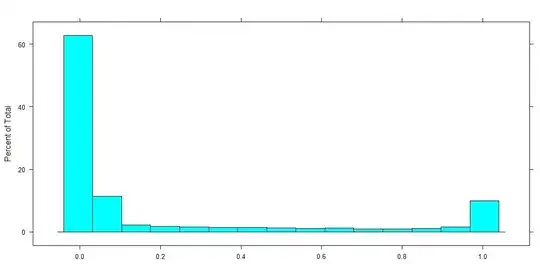Dependent variable
I have a dependent value in the range of [0,1]. Meaning 0 and 1, and all values in between are included. Therefore this is a proportional value such as for instance the percentage of land a farmer fertilizes.
Model
The model I am currently focusing on is a logistic model.
- However, as an output, I would like to see how my dependent variable is predicted by the model (to compare the real values with the estimated values).
However, a logistic regression normally gives as an output "the probability". As a result, I am now a little bit confused.
My model =
out <- glm(cbind(fertilized, total_land-fertilized) ~ X-variables,
family=binomial(cloglog), data=Alldata)
To predict the estimated percentage of fertilized land I use
Alldata$estimated_fertilized<-predict(out,data=newdata,type="response"))
Is this correct? Or does this line give me the probability instead of the predicted percentage? If not correct, what should I do to get what I want?
UPDATE
Given the fact that there are questions on the correctness of the chosen model, I provide some additional information:
